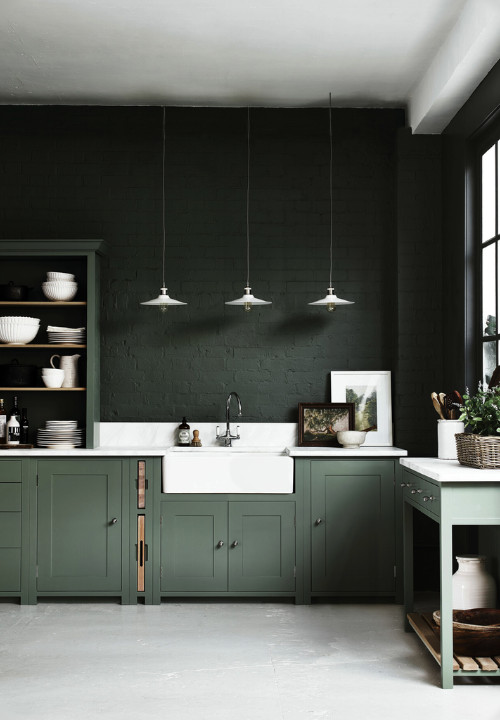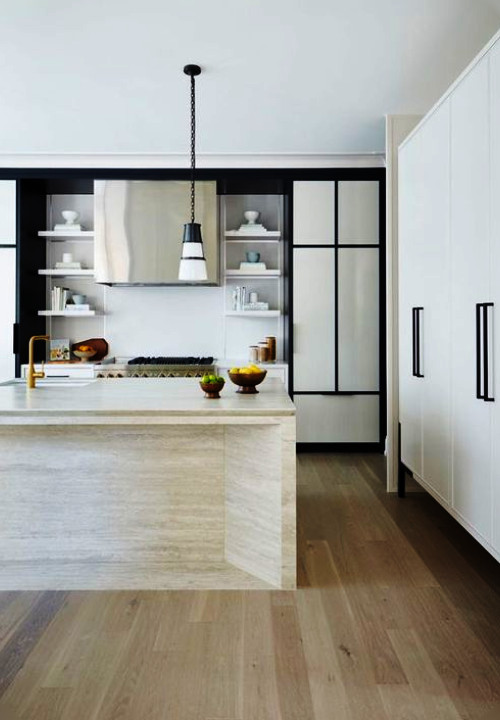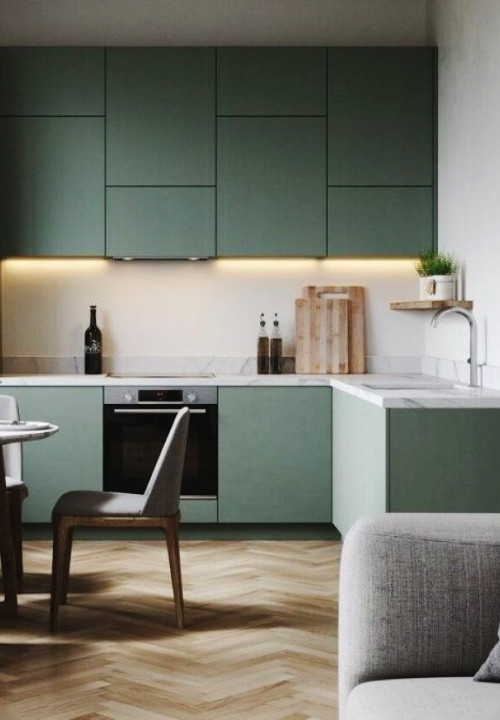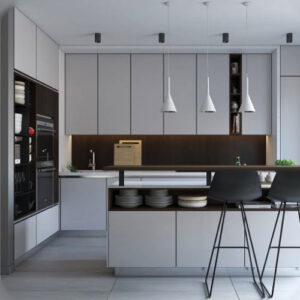Monochromatic kitchen color schemes have been making a bold statement in the world of interior design, and with good reason. A monochromatic palette allows for a timeless, sophisticated, and cohesive look that’s sure to make a lasting impression.
However, designing a monochromatic space is not without its challenges. One must balance the use of a single color with the need for visual interest and texture, without falling into the trap of a boring or cluttered look.
Fear not, as we’ve rounded up nine top tips to help you master the art of a monochromatic kitchen color scheme, ensuring a stylish and cohesive space that reflects your personal style. So grab a cup of coffee, and let’s dive in!
Monochromatic Kitchens | Key Summary
- Monochromatic color schemes refer to a single color or hue, allowing for wider creativity in terms of texture, pattern and material.
- Tips for creating monochromatic kitchens include starting with a neutral base, choosing a dominant color, experimenting with shades and tones, playing with texture, mixing and matching finishes, adding pops of contrasting color, using lighting to create ambience, keeping it simple, and considering the overall vibe.
- When creating a monochromatic color scheme, it’s important to avoid using too many shades of the same color, bright or bold accent colors, or lots of decor pieces.
What is a Monochromatic Kitchen?
The term monochrome is often associated with black and white, and whilst this is one example of a monochromatic color scheme, as they’re both technically considered shades of grey, the term actually refers to any single color or hue.
Often associated with minimalistic and modern designs, the simple use of color allows for wider creativity in terms of texture, pattern and material.
Monochromatic Kitchen Ideas
1. Start with a Neutral Base
The first step when looking for monochromatic kitchen ideas is to select a neutral color like white, beige or grey for your kitchen walls, cabinets and countertops. This will create a clean and timeless backdrop that allows your monochromatic color accents to shine.
Pro Tip:
Think about the natural and artificial lighting in the room when choosing your base color as different lights can affect how shades look.
Shop the Look:
2. Choose a Dominant Color
Choose one color to dominate your kitchen color scheme but don’t feel that you have to make them match exactly. Choosing subtle variations of the same colour will help to make the space more visually-appealing whilst still maintaining that monochromatic look.
Pro Tip:
Choose a colour based on the ambience you wish to create; for example, blues and greens would be good for those wanting a relaxing space.
Shop the Look:
3. Experiment With Shades and Tones
Incorporate various shades and tones of your dominant color to add depth and interest to your kitchen design. Lighter shades can make your space feel more open and airy, while darker shades can create a more dramatic and intimate feel.
Pro Tip:
Add your dominant color to areas such as the wall tiles, countertops and accessories so that it can be easily changed if you fancy a refresh.
Shop the Look:
4. Play With Texture
Texture is a useful tool for monochromatic kitchens as it helps to provide visual interest, breaks up large areas of one color, and adds some depth to the space. Use textured tiles, natural wood shelving and woven storage baskets for some much-needed dimension and character.
Pro Tip:
Marble is great for added texture to a white or neutral-toned monochromatic kitchen space.
Shop the Look:
5. Mix and Match Finishes
Whilst your monochromatic kitchen limits you on color usage, you can get creative with the types of finishes your color palette uses. Consider mixing elements, such as matte and glossy paint finishes, for a subtle contrast.
Pro Tip:
Aim for a balance between the different finishes to avoid a lopsided look and consider using finishes in different areas of the room to create a sense of cohesion throughout the space.
Shop the Look:
6. Add Pops of Contrasting Color
Another way to create contrast is to add in a color pop to your monochromatic kitchen that will help to provide some depth and dimension. For example, you could add a bright yellow vase to your all-blue kitchen or a brightly-patterned rug.
Pro Tip:
Be sure to stay in control of the contrasting color pops you add by selecting only one or two minor touches for additional interest that won’t detract from the overall monochrome scheme.
Shop the Look:
7. Use Lighting to Create Ambience
Lighting can play a big role in setting the mood for your monochromatic kitchen. Use dimmer switches, under-cabinet LED lighting, and pendant lights to create different levels of light and shadow in your space.
Pro Tip:
Layer lighting styles instead of relying solely on overhead lights, which can be harsh. Try using a combination of ambient, task, and accent lighting to create a warm and inviting atmosphere.
Shop the Look:
8. Keep it Simple
Remember that less is often more when it comes to monochromatic design. Keep your accessories and decor minimal to create a clean and uncluttered look.
Pro Tip:
Limit décor elements to just one or two key pieces for a more cohesive, but clean space.
Shop the Look:
9. Consider the Overall Vibe
Think about the overall vibe you want to make within your kitchen space as the ambience you choose will play a big role in your color choices. Energetic, lively rooms will be better-suited to a bright, bold color while relaxed rooms suit more muted shades.
Pro Tip:
Use accessories and textured items to further support the overall ambience of your room. Consider using items such as candles, bread boards, flowers or ceramic sculptures that add visual interest, shape and depth.
Shop the Look:
What Things Should You Avoid When Creating a Monochromatic Color Scheme?
1. Don’t Use Too Many Shades of the Same Color
There can be a temptation to use various shades and textures to create visual interest in your kitchen space but this can leave the room feeling disjointed and cluttered. Keep the space balanced with just one or two shades of your chosen color, and use different textures and finishes to add depth and contrast.
2. Don’t Use Too Many Bright or Bold Colors
A monochromatic color scheme is all about using different shades of the same color to create a cohesive and harmonious look. While a pop of contrasting color can be a great way to add interest to the space, using too many bright or bold colors can detract from the overall look and feel of the room.
3. Don’t Use Colors that Clash
Using colors that clash with each other can create an unbalanced and chaotic look that isn’t suited to monochromatic color schemes so it’s best to avoid this. Before choosing your color scheme, consider the undertones of your chosen color and choose complementary colors and finishes that enhance the overall look of the space.
Summary
Creating a monochromatic color scheme is an effective way of creating a sophisticated, visually-exciting style to your kitchen space. Although it can be a hard look to perfect, our nine tips are the perfect place to start so that you can achieve a stylish and cohesive room that also reflects your own, personal style.
Remember to experiment with shades and textures, mix and match materials, and incorporate pops of contrasting colors to add depth and interest to your monochromatic space. With plenty of attention to detail, you can create a stunning and harmonious monochromatic color scheme that will leave a lasting impression on anyone who enters your home.
